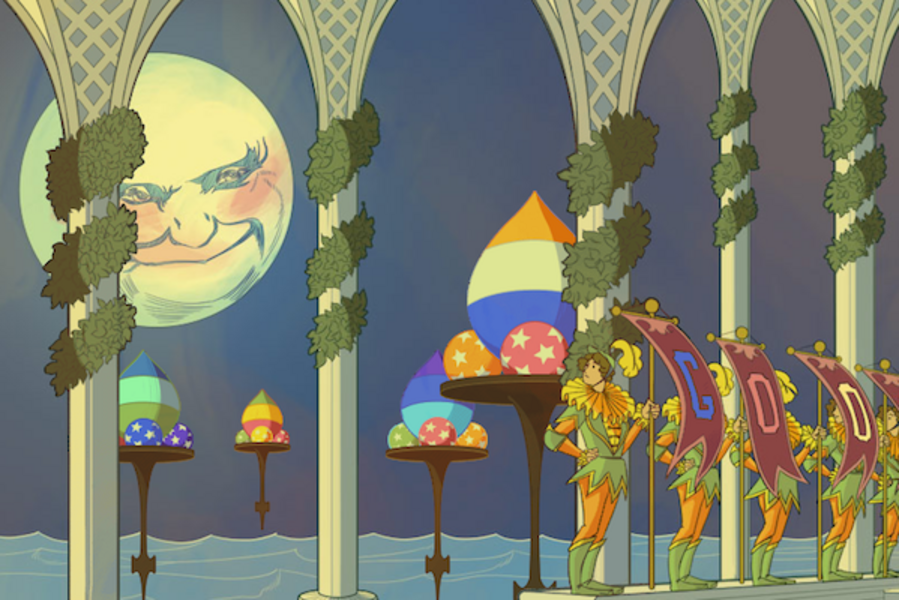Winsor McCay: Remembering the artist behind Little Nemo
The Google homepage today depicts an old-fashioned comic strip, in muted hues of blue, red, green, and yellow. Click on the tab on the bottom right of the doodle, and watch a pajama-clad boy tumble, panel by panel, through a fairytale land of clouds, castles, and princesses, before finally landing back in his own bedroom. The doodle is an homage to the artist Winsor McCay, and his most famous creation, Little Nemo, which turns 107 years old today.
So who was McCay, exactly? Only one of the most influential cartoonists in history.
McCay was born in Canada, probably around 1867 or 1868 – the exact date and location remain unclear. When McCay was still a child, his family moved from Canada to Spring Lake, in Michigan. The young McCay drew fervently, and and around 1880, one of his illustrations, of a sinking steamer, was apparently snapped up for use in postcards.
Eventually, McCay was discovered by John Goodison, a drawing professor at Michigan State Normal School. Goodison agreed to tutor McCay informally, although McCay never officially enrolled at Michigan State. In his spare time, McCay wandered the local "dime museums" – an attraction popularized by P.T. Barnum – and drew cariactures for passersby.
According to the Ypsilanti Citizen newspaper, in 1888, one of Winsor's drawings was displayed at a showing in Ypsilanti, Mich.
"The work of Art exhibited at the Post Office by Winsor McCay," a reporter noted at the time, "is a great credit to the young man’s artistic ability." A whirlwind of drawing gigs soon followed.
McCay moved to Chicago, where he was an apprentice at the National Printing and Engraving Company, and then to Cincinnati, where he was paid to draw the so-called "freaks" – among them a bearded lady – at the Vine Street Dime Museum. In 1900, he was snapped up by the Cincinnati Enquirer to draw a strip called "The Tales of the Jungle Imps by Felix Fiddle," but in 1903, he left the Enquirer for The New York Herald.
In 1905, he debuted "Little Nemo in Slumberland," his master-work, which would appear in various papers for the next two decades. The title character of McCay's strip was a young boy, always drawn tousle-headed and in his pajamas. Every night, Nemo would be sucked down into the land of dreams, toward the domain of King Morpheus and his daughter, Princess Camille. (Camille is featured prominently in Monday's Google Doodle.)
"Little Nemo in Slumberland," McCay's biographer John Canemaker has written (hat tip to the Ohio State University Libraries), "unlike any comic strip before or since... [I]t represented a major creative leap, far grander in scope, imagination, color, design, and motion experimentation than any previous McCay comic strip (or those of his peers)."
As David Clark Scott of the Monitor notes today, McCay eventually moved on to animation; his movies "How a Mosquito Operates" and "Gertie the Trained Dinosaur" are still cult classics.
McCay died in 1934, and was buried in Brooklyn. But his legacy lived on, both through collected editions of his work and newer media, such as video games (see video above).
In 1989, the American director Chris Columbus helped write an animated adaptation of the McCay strips. Directed by Masami Hata and William Hurtz, "Little Nemo: Adventures in Slumberland," discarded McCay's soft palettes for a big, vibrant, cartoonish style. Still, "Adventures in Storyland" received a generally friendly reception from critics, with Roger Ebert calling it an "interesting if not great film." It will be released on Blu-Ray early next month.
Fan of the Little Nemo strips or the Columbus cartoon? Drop us a line in the comments section. And to receive regular updates on how technology intersects daily life, follow the Horizons team on Twitter @venturenaut.





